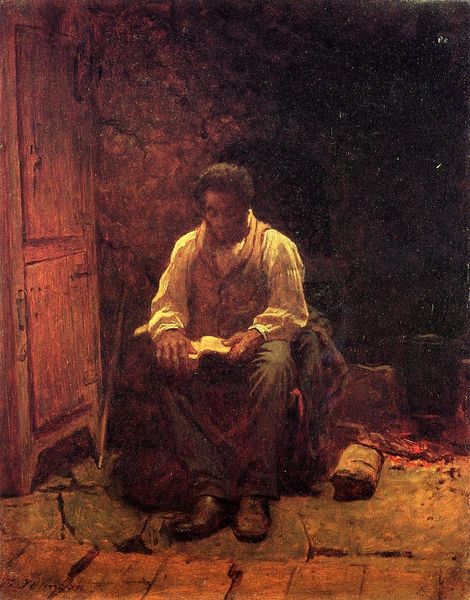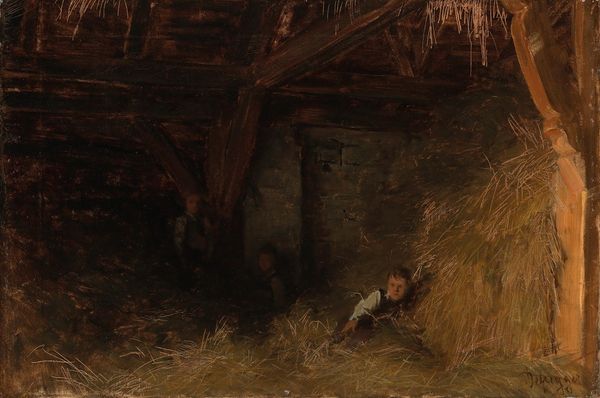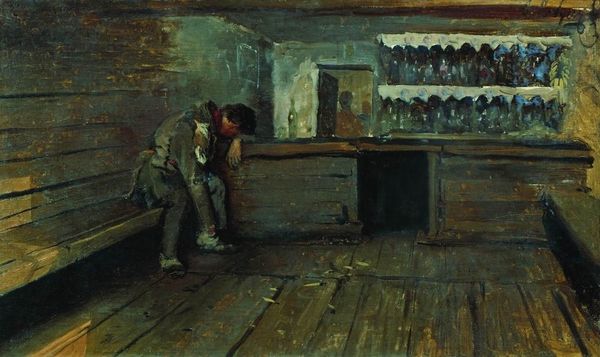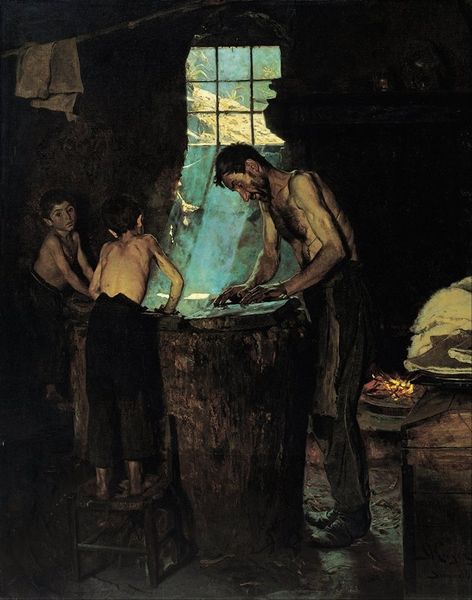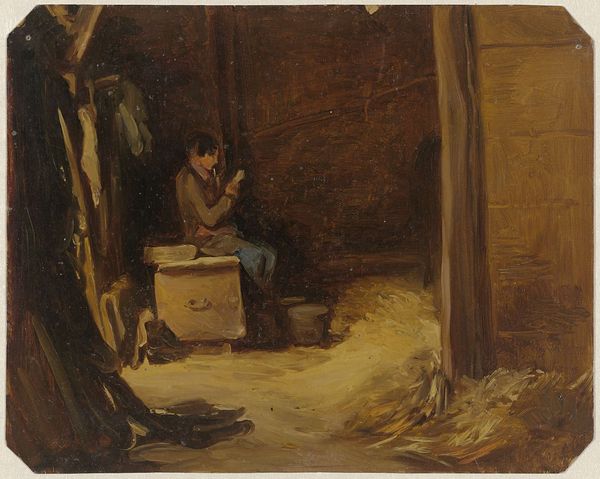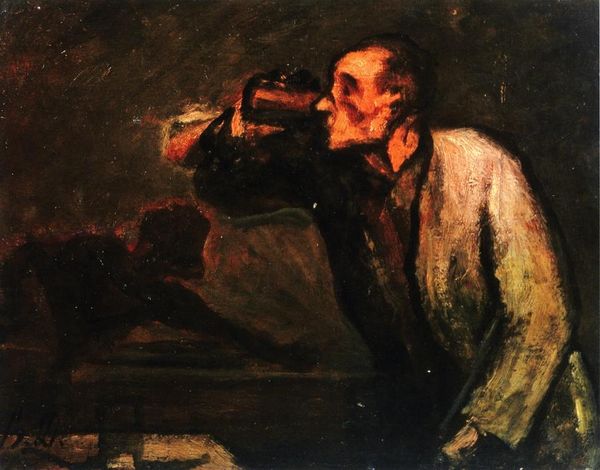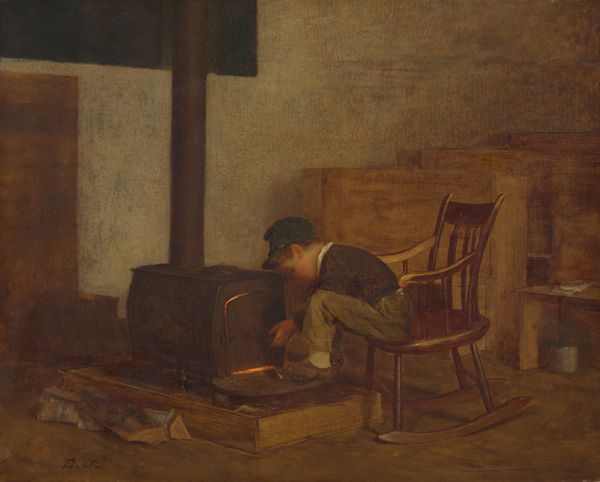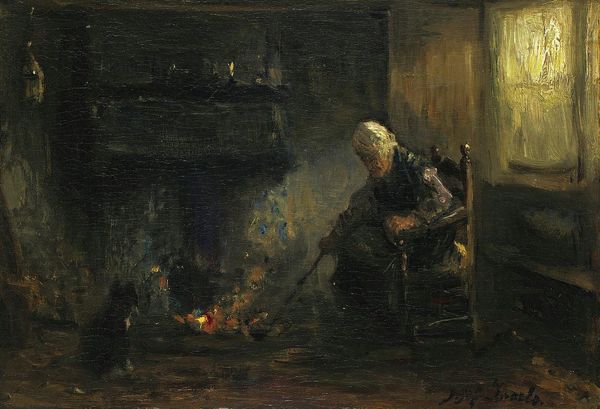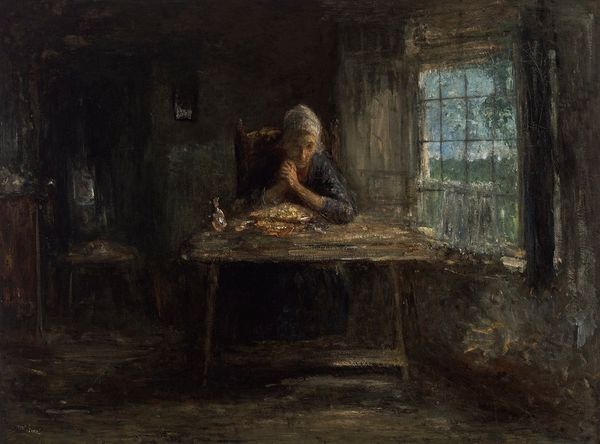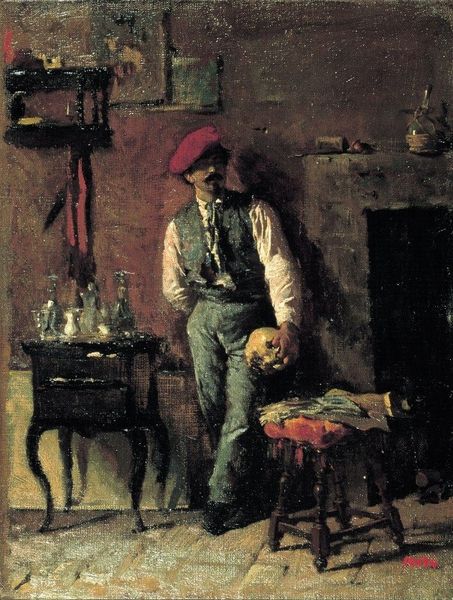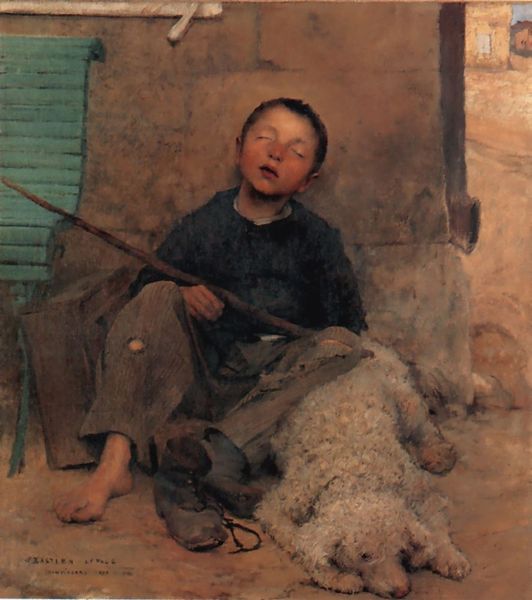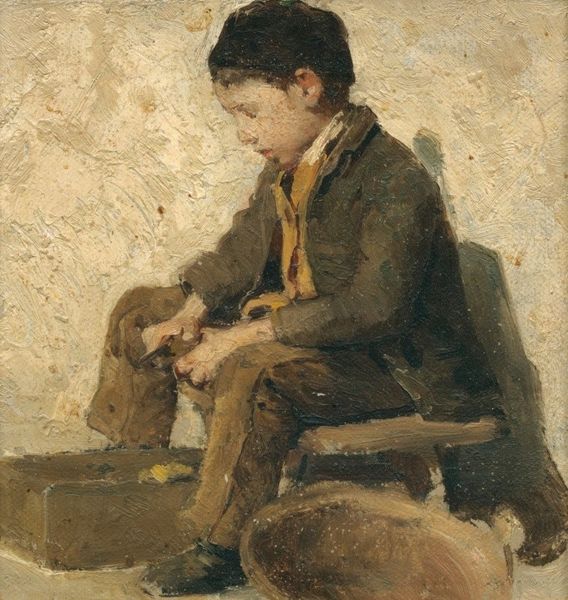
oil-paint
#
portrait
#
oil-paint
#
charcoal drawing
#
oil painting
#
genre-painting
#
realism
Copyright: Public domain
Eastman Johnson’s painting "Negro Boy" is a study in contrasts, dominated by a somber palette. The composition is structured around the stark geometry of the cabin corner, with a dark recess framing the figure of the boy. This use of light and shadow—chiaroscuro—draws our eye to the boy's form, yet simultaneously obscures his features, rendering him anonymous. The painting's power lies in its ability to provoke questions about representation and identity. Johnson's choice to obscure the boy's face while highlighting his leisure activity challenges fixed meanings of race and labor. The boy is seemingly at rest, but he is also framed within the oppressive structures of his time. The flute he plays becomes a signifier, embodying themes of innocence and cultural expression. Ultimately, it is Johnson's masterful use of light and shadow that leaves a lasting impression. It is through this visual tension that the painting invites us to reconsider our understanding of visibility, power, and representation. "Negro Boy" serves not just as a historical document, but as a complex and enduring work of art.
Comments
No comments
Be the first to comment and join the conversation on the ultimate creative platform.
